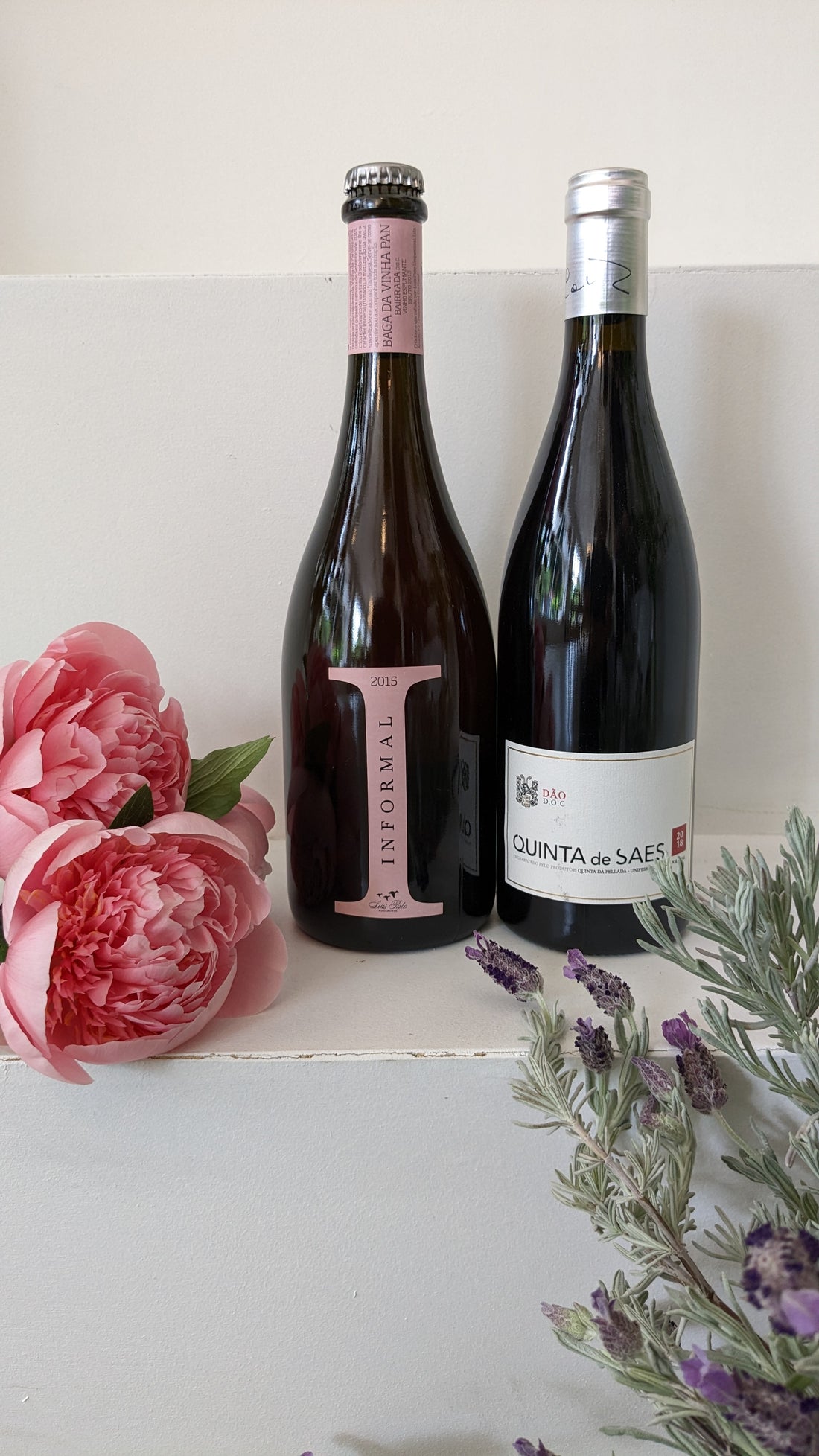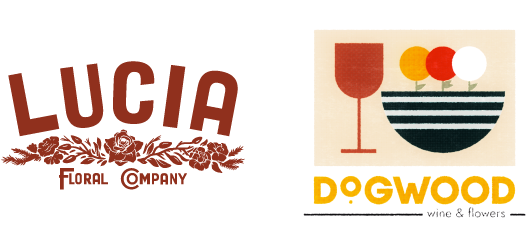
June 2023 - Portugal
June 2023
Portugal
Featuring:
Luis Pato
Quinta de Saes
Portugal, one of the true unsung heroes of the wine world. We touched on that theme, as well as gave a good climate/geographical overview on our October 2021 club focusing on Central Portugal. Give it a quick read here. This month, we focus again on Bairrada for sparkling rosé, and include neighboring Dão for a fantastic red. Since last time’s whirl on Portugal has a good intro on the country, I’ll be skipping any redundancies today. But no Dogwood wine club writeup would be good without a good ole fashioned rant, so I’ll give y’all a little history on Vinho Verde. Mind you there is no Vinho Verde in the club this month, but we will have one being poured at the tasting this week.
Diving into Vinho Verde
It’s crisp, affordable, lightly, spritzy wine that’s a great standby for warm summer days, but what actually is Vinho Verde? The fabled ‘Green Wine’ of Northern Portugal is as misunderstood as it is loved. First off, Vinho Verde cannot just come from anywhere. It is geographically protected and must be sourced from the Minho region, which stretches from Spain’s Atlantic border to just south of the Douro river. Essentially, the Western end of the Douro Valley (where Port is made) is the South-eastern (hottest) corner of the region Vinho Verde can be made in. To give you a point of reference - Braga, a regional municipality in the center of the Minho region, is roughly at the same latitude as Nantucket, Cleveland, and Mount Shasta. This, combined with the maritime influence of the Northern Atlantic means the region can be quite cold and rainy, leading to both a lushness in the landscape as well as high acidity and low alcohol in the wines.
Vinho Verde is not just spritzy, cheap white wine either. There is a massive variety of producers making the wine and a non-insignificant amount is produced as both rosé and red. Most of the stuff we see in the states is white, largely due to our perception of the region as consumers. White grapes that can go into Vinho Verde are numerous - Alvarinho, Arinto, Avesso, Azal, Batoca, Loureiro, and Trajadura to name a few. The best expressions often come from Alvarinho and Loureiro. Red and rosé bottlings will use Touriga Nacional, Vinhão, and a few other native grapes. Red is harder to find stateside, but it is delicious and light, with present tanning and a crunchy, acid-driven backbone. In Portugal they traditionally drink their red Vinho Verde out of ceramic bowls and enjoy it with almost every meal.
There are several subregions to the Minho region, all with unique micro-climates and properties. It’s too much to get into here, but as a good rule - if you see Vinho Verde marketed with a sub-region and/or a grape, it may be a higher quality bottling than your run of the mill bottle. I’ve even seen producers make, for example, Alvarinho from ‘Minho’ and purposefully omit the ‘Vinho Verde’ verbiage from the bottle because they want it to come off as a more serious wine. Some of these, much like the Albariño’s from Rias Baixas, can be incredibly age worthy and develop like the best Chardonnays. But it’s always a good idea to taste before you buy anything to age!
Ok, so you just skipped over all of that nonsense because the only thing you really care about is: why is it spritzy? Well, folks, big surprise: they carbonate it. Usually. At first, the spritz was a byproduct of quick fermentation and early release. The trapped CO2 from fermentation did not have a chance to dissipate in the bottle, so it was released upon opening. Thing is, there isn’t really a natural way to guarantee this level of delicate spritz. So once consumers began to expect it, winemakers had to use artificial means to ensure it would be there, hence carbonation. A good rule regarding spritz and Vinho Verde is this: if you want it spritzy and crushable, look for a riesling or bordeaux-shaped bottle (tall & skinny or evenly cylindrical with a short neck). If you want it still and age worthy, look for a Burgundy bottle (shorter, with a gently sloping neck - what Oregon Pinot’s are bottled in).
Another fun fact - Vinho Verde is often grown on the pergola system. This is a rare method of training grapevines where the trunk is grown long and tall, and then the cordon’s branch off unidirectionally to create a sort of overhead canopy (similar to a, yes, pergola). This can be as high as overhead while other times it is waist high. The pergola system is especially useful in damp, cool climates like Northern Portugal and Spain, where the height of the canopy keeps the moisture-laden ground and rot-susceptible grapevines apart. The afternoon sun quickly dries the grapes and leaves off and the disease pressure is lessened. It is also due to the damp climate that organic & biodynamic production is much more difficult in this area. However, it is not impossible and, with new techniques and market demand, is becoming more common.
So there you have it, the Dogwood guide to Vinho Verde!

Alvarinho vines trained on Pergola in Northern Portugal.
Luis Pato, ‘Informal’ Baga Sparkling Rosé, Barriada 2015
The Pato family has been making wine at Quinta do Ribeirinho since the mid 1700s, but it was Luis’ father, João Pato that commercially bottled their family wine in the 1970s and became one of the first producers in the newly demarcated Bairrada DOC. Luis took over a decade later and was quick to make some changes - notably adding destemming and smaller oak barrels to the regime. Baga, a native grape that is sometimes seen as lacking fruit and high in tannin, was the only grape allowed back then and is still what Pato focuses on. Luis spent 20-odd years mastering this grape, learning to harvest it at optimal ripeness and give it the right treatment to coax out the most age worthy features such as stewed dark fruit, high acidity, fine grippy tannins, and medium body.
Well, fast forward to 1999 when the Portuguese government “nominated a guy for the Bairrada head office who was not the right man” (Pato’s words). The region started allowing international grapes like Cabernet Sauvignon to be part of blends. Luis, a purist, did not like this. “So to show a yellow card I moved from Bairrada to Beiras” he said. Beiras is the larger appellation that Bairrada is within. It is the Willamette Valley to our Chehalem Mountains. Luis, a self-proclaimed ‘rebel winemaker’ spent almost a decade fighting for the concept that the finer reds of solely Bairrada should be labeled as such and others downgraded to Beiras. He yielded a little in 2008 when he started to label some of his top wines (including this one) as Bairrada, but still gives a nod to the struggle with many of his other wines being labeled Beiras.
This wine is a lovely expression of Baga sparkling. It’s given a short maceration on the skins before pressing, then 3 years of traditional method (champenoise) aging on the lees before being disgorged and bottled. This particular release has spent another 5 years in bottle. It has a lively backbone with a touch of grip and richness. Notes of pomegranate and rhubarb float atop the brioche/autolytic base. Perfect summer sipper with food or without.

Quinta de Saes, Tinto, Dão 2018
Álvaro Castro and his daughter, Maria, are following a 400-year family tradition in tending to grapes on their two small estates, Quinta de Saes and Quinta da Pellada. Álvaro, a professional civil-engineer inherited the estate in the 1980s, after the winemaking tradition since 1527 had been broken for just one generation. He quickly enlisted the help of family friends and accomplished winemakers to rehabilitate the estate and show him the way. The first vintage under his guise was the 1989 Quinta de Saes Tinto. Maria joined the business in 2001 after earning a degree in enology and, together, they have started to make wine with less intervention and deeper adherence to organic principles.
Dão is climatically a great zone for winemaking. It is protected by mountains on its eastern and northern ends, which keeps the heat from the Douro valley and Spain’s Extremadura at bay. On the west side, smaller mountains keep the brunt of the Atlantic away, but at times break allowing the cool air to temperate the region at night. There is also just enough rain that many producers can dry-farm (not irrigate) with good success.
The Castro family chooses to follow Dão traditions in how they make their wines. Much like in the case of Bairrada and the Pato family, there was a big push to internationalize and modernize Dão in the 80’s and 90’s. Álvaro resisted, focusing on ‘slow winemaking’ - this includes the use of native grapes, wild yeasts, neutral barrels, and - perhaps most importantly - the growing and picking of field blends rather than carefully delineated plots.
This wine is roughly ¼ each of Touriga Naçional, Alfrocheiro, Jaen (Mencía), and Tinta Pinheira, all grown intermixed in the vineyard. Exact amounts vary each vintage depending on yield. It is macerated in a cold soak for 10 days to extract color and light aromatics, fermented in stainless steel, and then aged in large, partially neutral french oak. It has notes of violets and flinty minerality atop the backbone of cherry, raspberry, tobacco, and pomegranate. There’s a searing mineral backbone across the black cherry palate and a lovely spiciness to finish it off. This is not an expensive bottle of wine, but it is an easy reference point for what quality Dão should be.

